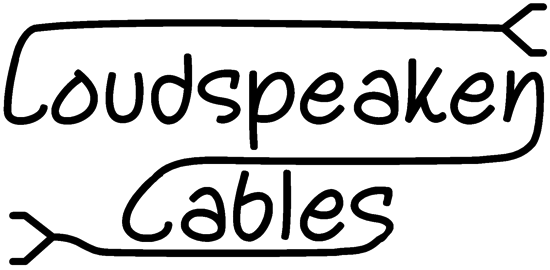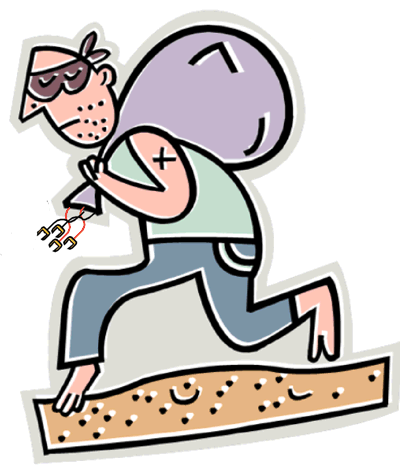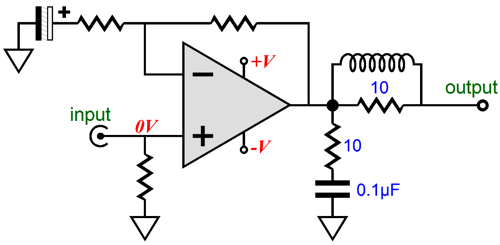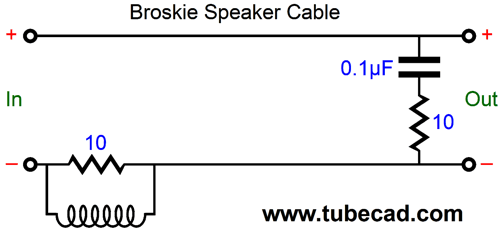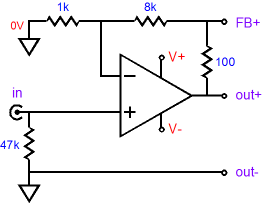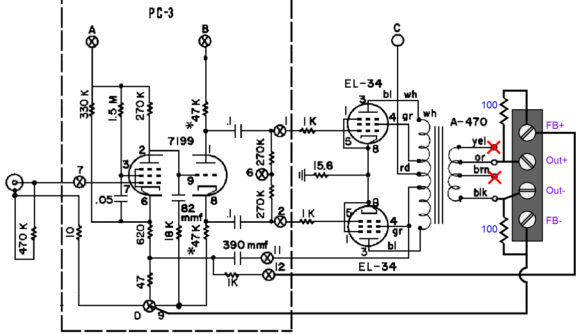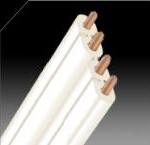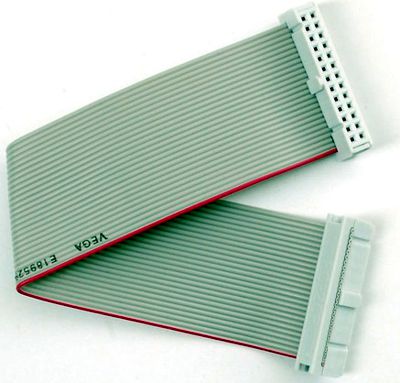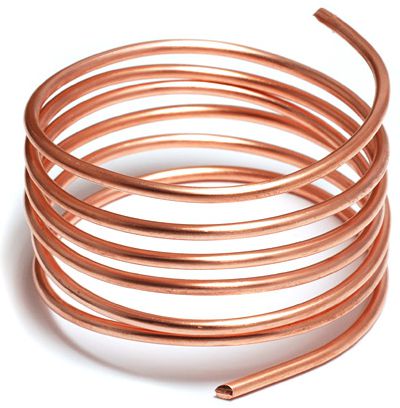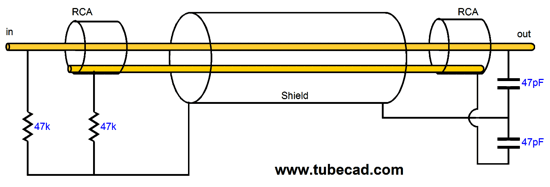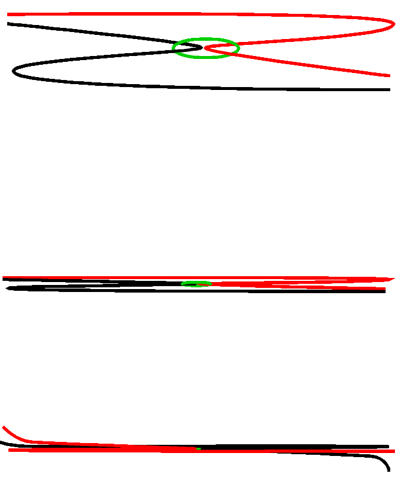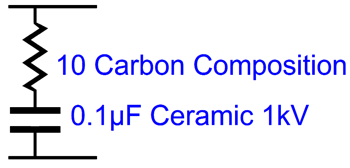| John Broskie's Guide to Tube Circuit Analysis & Design |
|
Post 242 08 September 2012
Loudspeaker Cables
"A hundred other things" wow that's a lot of other things. No wonder it cost $8,590 for a pair of 6-meter lengths. In the world of high-end cables, alas, this cable is a beer-budget product, as the AudioQuest K2 terminated speaker cable, with UST plugs in a 8-foot pair costs $14,049.75, not including tax and armor-car delivery. If my memory does not fail me, the Audioquest Everest series was even more expensive. But even that vertiginously high price is middling compared to the Nordost ODIN Supreme Reference Cables or the Modena speaker cable by Allan Shane, which cost $55,000 the pair. Imagine a burglar breaking in a house and stupidly stealing a $4,000 necklace when $110,000 worth of bi-wired Modena cables lay at his feet.
In contrast, many music lovers boldly state, "It's just wire, damn it!" As is often the case, but certainly not always, the truth lies somewhere in between, but not exactly in the center, as $27,500 is not the correct price for a pair of speaker cables. I am old enough to remember when a major upgrade was replacing the old 18-gauge zip cord, with its dark brown wire, its plastic covering grown brittle and crumbling, with some nice, new and shinny 12-gauge zip cord. I remember, back in the late 1970s, the fuss created by a fancy new speaker cable, intricately woven and relatively expensive, that pushed many solid-state amplifiers into oscillations, due to its high capacitance. (The workaround was to place clove of garlic at each end of the offending cable ;) This got me thinking and I made first pair of fancy speaker cables. But first, I must explain how a typical solid-state amplifier protects itself from oscillating when driving a highly-capacitive load.
Seldom do solid-state amplifiers nakedly attach to the speaker cable and speaker; instead, they use a passive LCR network to decouple the amplifier, in the event of a reactive problem. The inductor is simply a single layer of magnet wire wrapped around the body of a 2W, 10-ohm resistor. At frequencies below 160kHz or so, it is a dead short across the series 10-ohm resistor; at frequencies above, the 10-ohm resistor buffers the amplifier's output. The 10-ohm resistor and 0.1µF capacitor work in the opposite way, as above 160kHz, the capacitor engages its 10-ohm partner. This simple protection network shields the amplifier from both inductive and capacitive loads. (Sometimes the RC Zobel network appears after the resistor and inductor, which makes little sense to me.) As I saw it, the speaker cable should symmetrically include its own LCR network, as the speaker itself presented a reactive load. So, I took some 12-gauge zip cord and went to work.
The LR network (the resistor shunted by the inductor) was located right at the lug that attached to the power amplifier's negative output terminal; the RC network (the capacitor in series with the resistor), at the lugs that attached to the speaker input terminals. How did it sound? To be honest, I don't remember it sounding any different. But back then I only wanted to protect the power amplifier and I did not expect it to sound better, so maybe I forgot to fool myself. It would be fun to try this topology today, with fancier wire and snazzier amplifiers. In addition, this cable setup would help prevent airborne RFI from entering the power amplifier. Which brings me back to an experiment a late EE friend performed, wherein he added two 1-ohm power resistors in series with the speaker cable. Why? He was trouble by the better sound produced by tube amplifiers, so wondered if a poor damping factor improved the sound.
I listened to his system with and without the added resistors and I thought the sound did significantly improve with the resistors, but his solid-state amplifier didn't suddenly sound like a tube amplifier; it was just less annoying with the resistors, less brittle sounding, with improved imaging. The test that I wanted to perform was to try his resistors with my tube amplifiers. Or, try just using two 2-ohm resistors (one for each hot wire connection). Why? I wondered if the two resistors didn't isolate the amplifier from the cable and speaker, which a single 2-ohm resistor may not do as well.
Mystical Lengths of Speaker Cable
Remote Negative Feedback & Speaker Cables
I didn't expect voltage losses anywhere that high, but I did wonder what the sonic result would be of using remote-sensing negative feedback with an audio power amplifier. In this case, a modified Dynaco ST-70. I used four-conductor speaker cable, as I wanted to treat the ground speaker cable conductor as potential problem that needed to be enclosed within a feedback loop.
I added two 100-ohm safety resistors to four-terminal output strip for each channel of the ST-70. This way, if the remote-feedback wires fell off, the amplifier would still be safe, as its negative feedback loop would close through the added resistors. By the way, 10-ohm resistors would probably work just as well. How did it sound? Amazingly good. Shockingly good. It was an easy test to perform, as I only had to disconnect the remote-feedback wires and listen. The gain went up a tad without the remote feedback in place, which should have bestowed a real advantage on the non-remote-feedback configuration—but it didn't, as the sound worsened substantially. My view at the time was that remote feedback made all cables sound great, no matter how humble they be. But after some experimenting, I found that all four conductors should be the same. Here is an example: a friend, who worked at IBM, gave me some fancy and expensive four-conductor cable that he used at work, which held two heavy-gauge twisted wires and two thin-gauge twisted wires in their own shield, with all the wires covered in Teflon. How did it sound? Not any better than the four solid-core conductors in the AudioQuest F-14 cable I used back then.
Alas, around that time, I gave up on NFB amplifiers, so I stopped using remote-feedback cables. This was probably a big mistake, now that I think about it.
Computer Ribbon Speaker Cables
My buddy wanted to get fancy and alternate conductors for positive and negative leads, but I insisted that we just divide the cable in the middle, with the top twenty conductors attaching to the positive and the bottom twenty to the negative, as it would greatly reduce the chance that we would short the amplifier's outputs. I remember it taking far longer than I would have guessed to prepare the cables. How did this speaker cable sound? Not bad, not bad at all. I expected worse, as he had bought 4-ohm Magnaplaner speakers and the cable presented more DCR than I thought the speakers should see (he ran over twenty-foot lengths under the carpet). Computer flat wire ribbon cable is available with many twisted-pairs of wire, which might make for a better sounding cable. In addition, it would be relatively easy to bi-wire with 40-conductor flat cable. In fact, they sell 100-conductor cable. Or, we could easily try making polarized cables with the ribbon cable.
Thick Solid Copper
Unsheathed, 10-gauge (it might have been 6-gauge) copper wire. He had carefully created a wire sculpture that flowed from the back of his mini-monitors down to the floor, bent at a soft right angle, traveled in parable lines down to the wall, poked through a piece of hard wood, made another soft right angle turn, poked through another piece of hard wood, bent up and bended again before plugging into the back of his amplifier. Beautiful work. His single 12" subwoofer got the same treatment. How did his cable sound? Well, I the thought the bass sounded just about perfect, but I found the midrange and highs a bit lackluster. My recommendation was that he replace the 10-gauge wire to the satellite speakers with 16-gauge solid-core magnet wire, but he wouldn't entertain the idea. Think about this: if the wire is thick enough, if the speakers light enough, then the speaker cables could function as speaker stands as well.
Three-Conductor Wire
The four-conductor version could be used in a remote-feedback setup. For a modest increase in price, but a huge increase in hassle acquiring, we can buy Teflon-sheathed three-conductor wire, with silver-plated copper strands. (I remember seeing Teflon-coated Romex type cable before. )
The Broskie Interconnect Technique
Well, could this setup be applied to speaker cables? It could, but I haven't tried it yet. What would be needed is shield speaker cable and two 100-ohm (or 1k) resistors instead of the two 47k resistors used in the interconnects.
Of course, we could drive the shield with a solid-state or tube buffer circuit or polarize the shield with an external power supply or a battery stack. Who knows it just might good. I am inclined, however, to believe that the effect will not be as dramatic as with interconnects. Why? The smaller the signal, the bigger the difference. The biggest difference that I have heard from polarized cables occurred when I replaced my turntable cable with AudioQuest DBS Cougar Cable. Mercy, mercy, mercy. I truly do hate to admit it, but it was worth the cost, as it made the old audiophile-cable sound dull and lifeless in comparison. An other possibility would be to "ground" the shield to the house ground, which then could be used to "ground" the speaker driver baskets.
Power Cords On the other hand, I know that the AC found in most house wall outlets is no longer pure, far from it, as it often no longer resembles a textbook sine wave, being distorted by odd glitches and higher harmonics. Computer, TVs, every switcher wallwart, rectifier bridges and huge reservoir capacitors, vacuum cleaners, blenders, compact fluorescent light bulbs, power equipment and refrigerators—all taint and sully the AC voltage coming from our wall outlets. Even if your house is free of such electronic polluters, your neighbors will dirty the AC in your stead. Thus, if the power cord can function not as a perfect conductor, but as an AC filter, then I am all for fancy power cords. I have made only one fancy power cord and it was an attempt to make a very poor antenna. I took two 4 meter lengths of 14AWG Teflon-sheathed wire, black and red, and folded the wires thus:
At the bends, I used thick dental floss wrapped around the two wires to hold them in place. Then, I folded the wires again:
After compressing the four-wire thick bundle, I twisted the cable and terminated each end with an RC filter inside the plug and socket assemblies.
These RC networks are there to deal with incoming RFI and the back-feeding RFI generated by the audio device. Remember that energy cannot be destroyed; it can only change its form. RFI is energy and it can be converted into heat by the resistor, whereas the capacitor, being a nearly perfect reactive component, cannot dissipate heat. In other words, shorting power cords with just small-valued capacitors seldom does anything beneficial. How did this cable sound? To be honest, I don't remember, as I soon I finished the cable, I lent to a friend; it has never come back to me, which must be an endorsement of sorts. One modification would be to add a house ground wire; another would be to shield the cable, attaching the shield to the house ground. By the way, one danger with working with Teflon-coated wire is that the Teflon can undergo a cold-flow under pressure, which can short the two leads together; not good.
Bob Prangnell's Question
But that is probably a step too far for me. For example, I do not believe in ghosts, yet as a child I both saw and touched a ghost and as an adult I lived for several years in a haunted house; I didn't hear about it being haunted until after I moved out of it. I never saw or heard a ghost in the house, but my cat refused to follow me into one room, The Room, even though he was otherwise my shadow. Friends felt queasy in the house and never entered The Room. Painters broke into cold sweats while painting The Room and were desperate to flee the house. Both of the house's consecutive occupants after me, ignorant of the house's history, had horrific dreams in The Room, where they dreamt of being burned alive, which coincidentally was how the old woman had died in The Room decades before. And, while I lived there, as I walked down the stairs that led to the The Room, my hand tightly clutching the handrail, I was absolutely certain that if I my hand were to slacken its grip, unseen hands would push me to my death. But I, nonetheless, refuse to believe in ghosts, which is not so much a revelation of my poor powers of induction, but rather a testament to the strength of my will, the vitality of my convictions; it's my mind damn it and I will believe in what I want to believe in; period.
Next Time
//JRB
|
|
I know that some readers wish to avoid Patreon, so here is a PayPal button instead. Thanks.
John Broskie
E-mail from GlassWare customers:
And
High-quality, double-sided, extra thick, 2-oz traces, plated-through holes, dual sets of resistor pads and pads for two coupling capacitors. Stereo and mono, octal and 9-pin printed circuit boards available. Aikido PCBs for as little as $20.40 http://glass-ware.stores.yahoo.net/ Only $12.95 TCJ My-Stock DB
Version 2 Improvements *User definable Download or CD ROM www.glass-ware.com |
||
| www.tubecad.com Copyright © 1999-2012 GlassWare All Rights Reserved |
